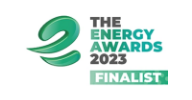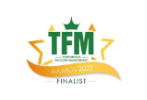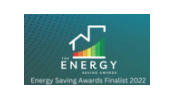Case Study: London Fire Brigade Data-Driven Insight from Live Metering for Gas to Electric Transition
- Poole, Dorset
- Fire Brigade
- Hot Water Design
- Adveco Live Metering / ARDENT Electric Boiler / GLT / ATST / SST /ASHP
Live Metering Assessment For Data-Driven Insights When Transitioning From Gas To Electric Water Heating
Planning For Decarbonisation
Data-driven insight is helping London Fire Brigade (LFB), one of the largest firefighting and rescue organisations in the world, to lead the net zero charge. Despite a variety of buildings all have an operational need for 24/7 hot water (DHW) to support the shift-based crews. Taking a leadership role, the Brigade has undertaken a major project of station refurbishment to decarbonise its operations. To enable this the Brigade took the decision to replace existing gas-fired systems with lower-carbon electric systems.
Adveco has worked closely with London Fire Brigade for many years, providing bespoke applications for stations across the capital. Challenged with supporting the gas replacement programme Adveco initiated a project to live meter hot water demands of the existing systems to enable accurate replacements to be designed that would balance the ratio of available electric power and hot water storage required for each building. The process enables Adveco to provide the most feasible system design that demonstrates predicted carbon reductions, optimises capital investment and allows for accurate calculation of future operational costs.
Adveco initially provided live metering to two fire stations operating 24 hours a day with dorms and general office use to seek data-driven insight on the properties’ hot water usage. Typical hot water demands encompass morning showers, meal times, washing and cleaning, including the potential wash down in the morning of the fire appliances. Expectations of peak usage were therefore believed to be for a period from 7 am to 10 am, and then repeating between 7 & 8 pm.
Data-driven insight would be critical for avoiding unnecessary implementation costs which could rapidly lead to the cancellation of a project
Site 1
The first site currently operates a single 60kW output gas fired water heater. Live metering indicated that the site exhibited an average daily usage of 1,193 litres with a maximum average of 1,354 litres. The peak demands were clearly defined actually running between 7am and 10am, trailing to 11am. With the maximum peak between 8am and 9am. This gave a theoretical design day hot water consumption of 1,827 litres with a single peak, which incorporates a planned 20% extra allowance to cover any possible unusual demands.
The system requirements can be met by 12 kW, with 250 litres storage. This would store water from a 5°C cold feed at 63°C and supply at 60°C. The recommendation for the first site would therefore be to replace the 60 kW gas water heater with a 12kW electric boiler, such as the Adveco ARDENT, which would be able to provide 200 litres of hot water (raised 50°C) per hour. With an intensive 60-minute peak of 560 litres, the design calls for a 500-cylinder to provide sufficient storage to accommodate the peak loads and ensure consistent water temperature as the system recovers. This can either be a standalone system with the boiler into a bottom coil, or it can be supplemented with an air source heat pump.
If using an air source heat pump, such as the Adveco FPi32, the hot store will cover 250L of the 360L and the additional input from the 12kW (nominal) heat pump will ensure the demand is met. In this scenario, the boiler will go into the top coil of the 500L cylinder and the heat pump into the bottom coil.
With an estimated annual consumption of 436,020 litres the estimated thermal energy demand for the year is 29,504 kWh with reduced carbon emissions of 4013 kg (compared to gasv of 6,884 kg).
Site 2
The second site to be metered operates two 50kW output gas-fired water heaters and a pair of 140 kW boilers. Plans for this station included replacing the gas-fired units with an indirect cylinder and two electric boilers and a heat pump to heat the building. The DHW cold feed is to be preheated by the air source heat pump and topped up by the electric boilers from 40°C to 60°C.
Live metering indicated that the station exhibited an average daily usage of 1,793 litres with a maximum daily recorded usage of 2,407 litres, averaging out to 2,003 litres. The peak demands were again spread between 7 am and 10 am. The long, low morning peak means energy input is critical. This gives a theoretical design day hot water consumption of 2,789 litres with a single peak.
On this basis, with a 20% uprate added to ensure the worst-case scenario is accommodated in the system design, requirements can be met by a 24kW system with 250-litre storage. This assumes the 40°C preheat feed, 63°C storage and supply at 60°C. The data-driven insight led to a recommendation for site 2 for a 500L twin coil cylinder, such as Adveco’s GLT 500, ATST 500, or SST 500, with the bottom half preheated by a heat pump and the top half heated by a 24kW electric boiler, such as Adveco’s ARDENT. The storage cylinder is derated by 50% as only the top half is guaranteed to store water at a usable 60°C. A smaller boiler could be specified and would cope as well, but without the ASHP preheat the full 24kW would be required ramping up operational costs.
The new system will have an estimated annual consumption of 616,564 litres giving a 16,544 kWh thermal energy demand for the year. Carbon emissions fall from 8340 kg for an equivalent gas-fired system to 3,250 kg for the new heat pump and electrically heated system for a total carbon reduction of 5,100 kg per annum.
Replacing gas-fired water heating with an electric system has a number of cost implications. Correct sizing with live data-driven insight can be clearly shown to reduce the system requirements seen in oversizing, saving considerably on the cost of purchasing and installing new hardware. This potential saving can number in the tens of thousands of pounds depending on the scale and complexity of the DHW application. Critically the replacement system design will operate within the electrical supply that exists to the building, exceeding this amperage would drastically inflate the project cost as new electrical demands would require re-cabling the fire stations’ connections to the local grid.
Operational costs do however climb and will continue to do so while grid electric prices remain much higher than those of gas grid supplies. The application of renewables including heat pumps and solar thermal can reduce, but not completely offset those direct electric costs.
The advantage is clearly defined in the reduction of carbon emissions, and, as work continues to decarbonise the electricity grid, the emission reduction figures supplied in the new system design should improve considerably, adding further environmental value to the system over the course of its operational lifespan.
Discover more about Adveco live water metering or talk to our sales team about booking a Live Metering session for your project.
- Electric replacement of gas-fired water heating is a focus for LFB decarbonisation strategy
- Adveco live hot water metering employed for accurate system modelling to avoid oversizing
- Data helps reduce capital investment, defines carbon reductions and informs new running costs





















